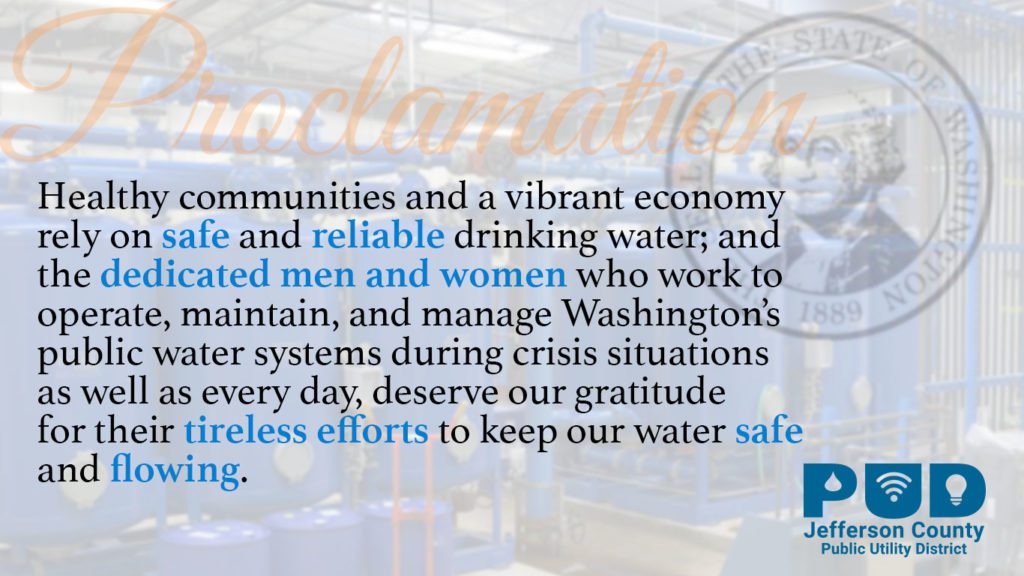It’s Drinking Water Week!
 What’s Flowing from Your Tap? A Look Beneath Our Feet
What’s Flowing from Your Tap? A Look Beneath Our Feet
For most residents of Jefferson County, the water that flows from the tap starts its journey deep underground—often more than 100 feet below the surface! Down there, nestled in ancient glacial deposits and basalt bedrock, lies our hidden water source.
But don’t let the term “underground” fool you—this water isn’t just sitting still. It’s constantly on the move, flowing through cracks, layers of soil, and stone, eventually finding its way to wells, creeks, rivers, and even the salty seas that surround our corner of the Peninsula.
Much like rivers and streams above ground, these underground waterways rise and fall with the seasons. Fortunately, our aquifers—natural underground reservoirs—are pretty resilient. They can store large amounts of water, making them more drought-resistant than many surface sources. Still, our water supply isn’t unlimited.
Factors like low rainfall, hardpan soils that block water infiltration, and our unique coastal geography all limit how much water we can count on. That’s why it’s so important to use our water wisely and protect this vital resource.
Here in Jefferson County, our team is proud to serve over 5,200 of our neighbors with clean, reliable drinking water.
Did you know that 70% of water is used outdoors? Here are some outdoor watering tips to consider:
- Cold showers aren’t fun, and neither is letting that cold water simply drain away unused! Consider capturing the frigid pre-shower water in a bucket for use in your garden to help make the absolute most of our water resources! Remember: Every drop counts! Feed those carrots so they can feed you, too!
- Don’t run water continuously when washing your car. Use a nozzle on the hose to stop the water flow between rinsings. Clean the car with a pail of soapy water.
- Use a broom, not a hose, to clean driveways and sidewalks.

- Cut down on grass – grass requires up to four times as much water as other plants.
- Cut back on the amount of grass in your yard by planting shrubs or ground cover or putting in rock gardens.
- Choose climate friendly plants – many native plants can survive on rainwater alone, and they’re more disease and insect resistant.

